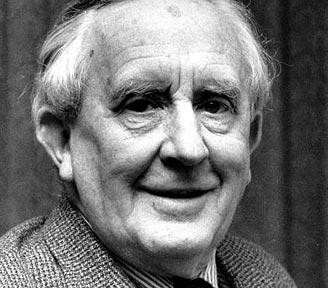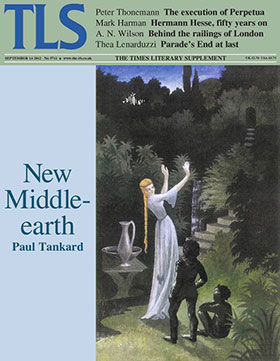 In 1968, artist and art teacher Mary Fairburn created a number of sketches based on The Lord of the Rings and sent them to author J.R.R. Tolkien. The writer was famously against his series being illustrated, saying, “As far as an English edition goes, I myself am not at all anxious for The Lord of the Rings to be illustrated by anybody, whether a genius or not.”
In 1968, artist and art teacher Mary Fairburn created a number of sketches based on The Lord of the Rings and sent them to author J.R.R. Tolkien. The writer was famously against his series being illustrated, saying, “As far as an English edition goes, I myself am not at all anxious for The Lord of the Rings to be illustrated by anybody, whether a genius or not.”
However, Tolkien’s first response to Fairburn’s artwork was encouraging. Her first pictures included Gandalf on the tower of Orthanc and “a little sketch of Gollum,” which Tolkien called “splendid.” He wrote, “They are better pictures in themselves and also show far more attention to the text than any that have yet been submitted to me.” He even admitted, “After seeing your specimens, I am beginning to […] think that an illustrated edition might be a good thing,” and would be “very pleased indeed” to see her other pieces when they were finished.
Three weeks later, she sent three more pictures, including the Inn at Bree and the Mirror of Galadriel. Sadly, around that same time, Tolkien had fallen down the stairs at his home in Oxford and was hospitalized for a month. To make maters worse, he and his family were planning a move, and while he was in the hospital, his letters, books, and papers were packed up without any instruction.
After over a month with no correspondence from Tolkien, Fairburn wrote to him again, expressing her concern. Tolkien sympathized and wrote to his secretary, “As for poor Miss Fairburn: . . . If you could let me have her address, I will write at once to her […] I was greatly interested in her drawings – especially since they caught in style and colouring something of my own feelings […] I will do what I can to compensate her for her anxiety and delay. It might be possible for her to come and see me (at my expense) as soon as the drawings are recovered.”
He even wrote another letter to her giving his new address and telephone number, with an offer to purchase some of her artwork, since an illustrated version of The Lord of the Rings no longer seemed likely. Though Fairburn was in dire financial straits, she declined his offer of purchase, instead asking for the return of her pictures so they could be used as payment for outstanding debts.
Tolkien reluctantly returned her artwork, but after a telephone conversation with Rayner Unwin, he wrote again to her, saying that his publisher “was not so decisive as I had expected, and was evidently ready to ‘consider’ an illustrated edition.” He was sure to warn her that a decision would not come quickly, and to help her situation, he enclosed £50, “As a gift.” (That amount is equal to about £1,250 today.)
Fairburn replied, “If these things ever do come off, they evidently take much more time than I had realized,” and offered to return her pictures to Tolkien in the hopes that they may one day be used as illustrations. In the last surviving letter of their exchange, Tolkien requested her “picture of Galadriel at the Well in Lorien,” adding, “it so very nearly corresponds to my own mental vision of the scene.”
 Dr. Paul Tankard of the University of Otago visited Mary Fairburn at her home in Australia and contacted the Tolkien Estate for access to Tolkien’s letters. He is Senior Lecturer in English at the University of Otago in Dunedin. His main research interests are Samuel Johnson, James Boswell, and C. S. Lewis and his circle. His full article about Tolkien and Fairburn was published in The Times Literary Supplement on September 12, 2012.
Dr. Paul Tankard of the University of Otago visited Mary Fairburn at her home in Australia and contacted the Tolkien Estate for access to Tolkien’s letters. He is Senior Lecturer in English at the University of Otago in Dunedin. His main research interests are Samuel Johnson, James Boswell, and C. S. Lewis and his circle. His full article about Tolkien and Fairburn was published in The Times Literary Supplement on September 12, 2012.



Pingback: Anonymous